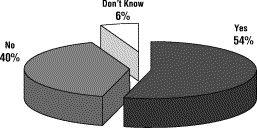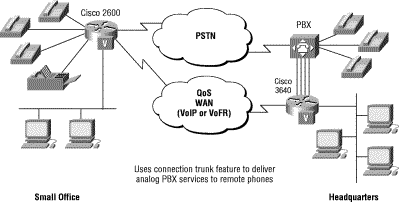Figure 1: Percentage of Fortune 1000 Companies Planning on Integrated Voice and Data over the WAN (PCWEEK 07/27/98)

Companies spend billions of dollars each year on internal phone calls and faxes between their own offices. Systemsoffers several ways to significantly reduce costs by integrating voice, fax, and data onto a single network infrastructure. Utilizing advanced voice and fax over packet technologies enterprise customers, as well as service providers, can deploy integrated, scalable networks without compromising voice and fax quality. In addition, the deployment of these multiservice capabilities can be done without impacting the way employees make phone calls or send faxes.
Voice and data have been integrated for years on Time Division Multiplexing (TDM) networks. TDM has enabled diverse functionalities to utilize the same physical wires by multiplexing the different traffic into dedicated slots on the wire. The "dedication" of these slots makes TDM highly inefficient. If there is no voice traffic, the space is still allocated and unusable by the other data types such as IP traffic. Many customers today are faced with ever-increasing requirements to be more competitive. This often means looking for ways to reduce costs and increase overall production of employees, goods, and services. Most of these customers, according to Forrester Research, Inc. (see Figure 1) are planning to use voice and data integration to help solve these problems.
Figure 1: Percentage of Fortune 1000 Companies Planning on
Integrated Voice and Data over the WAN (PCWEEK 07/27/98)

The system access routers enable the traditional telephony traffic such as voice and fax to be integrated with traditional data traffic. This integration is done by enabling the modular access routers with traditional telephony interfaces so that Private Branch Exchanges (PBXs), Private Access Branch Exchanges (PABXs), key systems, traditional phones, IP phones, fax machines, and even the public switched telephone network (PSTN) can physically connect to the router. Once these connections have been made, the voice and fax traffic is packetized by very efficient, high-powered, Digital Signal Processors (DSPs) and placed in IP packets. Once in a packet it can be transferred to other locations in the network based on the dialed number via the LAN or WAN. This can result in huge cost savings for many customers since there is no longer a toll paid on the intraoffice voice calls.
Systems enable business-quality voice and fax, even over low-bandwidth WAN connections. With the ubiquity of IP networks, many customers will benefit from the attractive economics of IP-based voice/fax solution. This includes companies that use a mix of WAN technologies such as Frame Relay, leased lines, and Integrated Services Digital Network (ISDN) and companies that intend to extend voice capabilities to desktop applications.
2. Cost savings through toll bypass
3. Solution scalability
Many companies today have multiple networks to maintain, manage, and grow such as the data network, the telephone network, and in some cases, video networks. Converging these networks into a common infrastructure can reduce overall spending, reduce complexity at the branch office, and decrease the number of vendors.
Cost savings come from the reduction of calls placed across the PSTN that are made between intracompany offices. In some industry sectors such as insurance, intraoffice calling is quite common and can result in very large telecom bills. Many of these calls can be placed across the data network eliminating the per-minute charge being paid to the long-distance interexchange carrier (IXC).
By building a single common packet network it is possible to scale the network very effectively. This scaling efficiency comes from the fact that the bandwidth is a shared medium. If telephone calls are not being placed, then that bandwidth can be used by other applications.
The most common application for the voice/fax network is intra-company phone calling and faxing. Using the voice/fax network, companies can significantly reduce their long-distance telephone and fax charges by routing their intracompany voice and fax traffic over their existing IP network, without compromising voice or fax quality. In intra-company networks, administrators can more readily monitor and control service levels and, therefore, achieve and maintain toll-quality voice and fax transmissions on their data networks by using the system and with voice/fax.
Since the voice/fax network works with standard phone and fax equipment, companies can shift their intracompany voice and fax traffic from their voice network to their data network without needing to retrain users. Transparent to the user, the System or seamlessly routes calls or faxes to the data network or out to the PSTN, depending on settings established by the network administrator. Cost savings from deploying the System voice/fax network modules to handle intracompany phone calls and faxes will typically cover the up-front equipment investment in a few months.
Some common configurations for intracompany phone calling and faxing are shown in Figures 5, 6, and 7:
Figure 5: Phone to Phone

A phone connected directly to a system or voice port in a branch office calls over a WAN connection to a phone in another branch office connected directly to a System or router.
Figure 6: Phone to Phone through PBXs and Key Systems

A phone connected through a key system to a voice port on the system or in a branch office calls over a WAN connection to a phone connected to a PBX that is connected to the system or in another office.
Figure 7: Real-Time Fax to Fax

A standard fax machine connected to a PBX or directly to the System or can send real-time faxes to another fax machine on the IP or frame network. In addition, companies who have a high volume of fax traffic with partners or suppliers can route fax traffic across an extranet managed by a service provider.
Another impressive cost-saving application for the voice/fax systems is off-net calling/faxing (see Figure 8). For calls or faxes that need to be routed over the PSTN, a System or with voice/fax network modules can first route them over the IP network to a local branch office, from which they enter the PSTN. This rerouting of phone and fax traffic turns a long-distance PSTN call into a local PSTN call, resulting in significantly lower rates.
Figure 8: Off-Net Calling and Faxing

Figure 9: PBX OPX

Enabling employees to be effective when working from home is becoming more and more important. Remote access via ISDN, Frame Relay, and even xDSL technologies provides adequate data services for most home workers. However, their access to corporate telephony features has been limited. With the system and it is possible to extend a virtual phone line over the same data pipe to the off-premise workers. They can have access to voice mail and other call features that exist on the PBX, such as call transfer. This is a great solution for the individual stockbroker working from home or for the small office of four to 12 people.
Numerous applications and products are emerging that enable companies to effectively utilize their data networks for communicating via voice and video. These applications, such as Microsoft NetMeeting and the new System IP telephones for audio- and videoconferencing.
A typical application is shown in Figure 10.
Figure 10: Computer or IP Phone to PSTN

A multimedia computer or IP phone connected to the LAN can place calls through the system to the PSTN network.